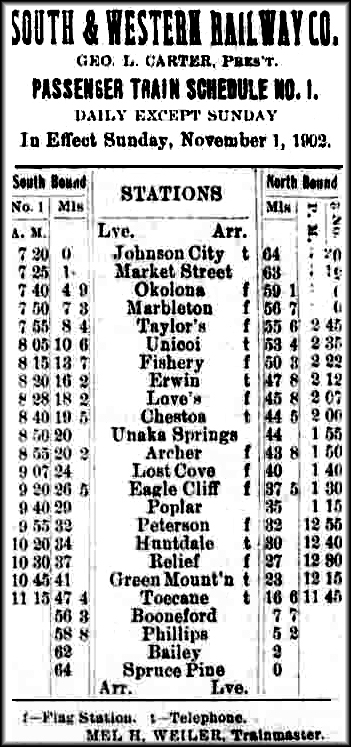My column today is a collection of “Newsy News” from Okolona between 1886 and 1902:
Feb. 1886:Mr. W.G. Anderson, Chairman of the Board of Trustees of Okolona's M.E. Church, South, thanked the people of Johnson City and surrounding area for contributions made for a new church building. Regrettably, he announced that the building had burned just as it was nearing completion. He promised that his church would immediately begin work on another building, a new brick one measuring 28 by 44 feet.
Apr. 1886: Although Buffalo Creek was rarely in the local news, Okolona had a sweet little creek that was sodden with the finest of grass and beautifully hedged with the yellow of golden willow. During corn-planting time, their little summits glistened with frost and snow as they displayed their frigid loveliness.
The Okolona post office changed hands from Mr. Buck to Dr. A.J. Peoples. Since the former one had served the community so long and with such honesty, it was hopeful that Dr. Peoples would keep Mr. Buck as his assistant to “bring in some sunshine and a few cherries at the proper season of the year.”
May 1886: Mr. S.M. Anderson offered his 250-acre farm for sale. It was located along the waters of Buffalo Creek, one mile from a good merchant mill. His farm had a good fence, was in a fine state of cultivation, was well timbered and watered, had six or seven good springs and had running water through the farm. It contained a fine brick house, a large well-constructed barn, an apple house and granary and all other necessary outbuildings. There were upwards of 1000 fruit-bearing trees, including peach and apple.
Mar. 1890: Fifty teams were needed to haul bridge timber and ties on the CCC Railroad in Carter and Unicoi counties. Interested parties were to apply to V.E. Steen, contractor, Okolona Post Office.
Jun. 1896: W.S. Anderson, known as “The Apple King of East Tennessee,” became the leading authority on the culture and the preservation of apples. He had on his table some very fine apples of that year's growth as well as preserved ones from the crop of 1895, a distinction to which few fruit growers had ever made claim. He developed a system of preserving apples intact as they came from the trees. (Can anyone shed more light on Mr. Anderson?)
Sep. 1897: The Rev. H.M. Peebles and his little son of Okolona, who had been suffering with diphtheria, were much better and expected to recover soon.
Nov. 1898: While fishing near his home at Okolona, John K. Haynes, the 10-year-old son of Mr. and Mrs. George Haynes fell in the creek and was drowned. He was afflicted with a falling sickness and supposedly fell in the creek during a spasm.
Dec. 1898: Mr. Zach Pugh came to Johnson City from his Okolona home and combined business with pleasure by subscribing to The Comet newspaper, a duty he believed every man owed to his family.
Jul. 1899: An excursion was advertised that would run from Johnson City to Unaka Springs on Sunday, July 30. The train departed Market Street at 8 a.m. and returned at 6 p.m. The outing afforded residents a splendid opportunity for spending a day in the beautiful East Tennessee mountains. Round trip fare was as follows: Johnson City $.65, Okolona $.60, Marbleton $.50, Rose Hill $.40, Unicoi $.25, Rock Creek $.30, and Erwin $.20. Tickets could be purchased at Gump Brothers on Main Street.

Nov. 1902: My column photo shows a South & Western Railway Co. passenger schedule between Johnson City and Spruce Pine, NC, a distance of 64 miles, which included 22 stops. The Okolona stop was between Johnson City and Marbleton. The “f” identified flag stops, meaning you had to flag down the train in order to gain access. The “t” defines those stops with telephone availability.
